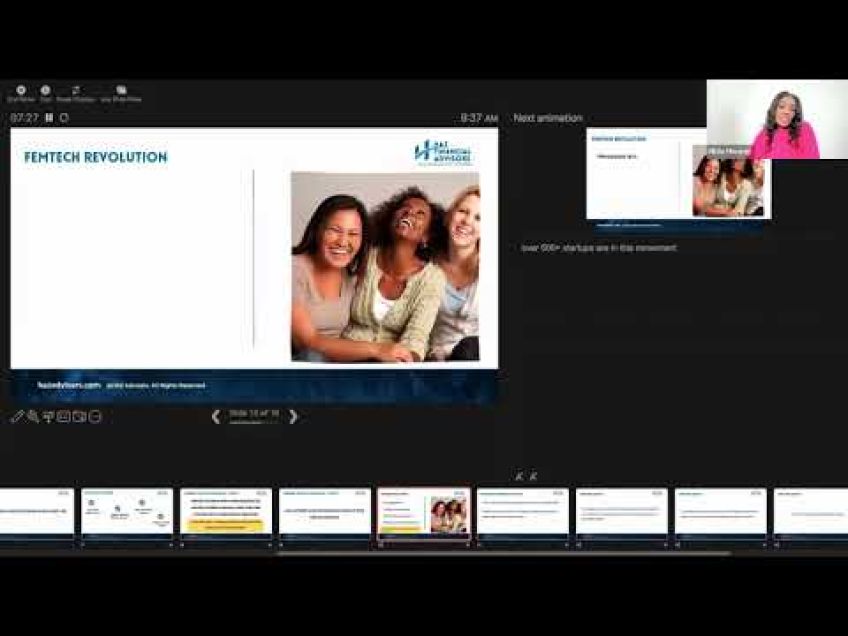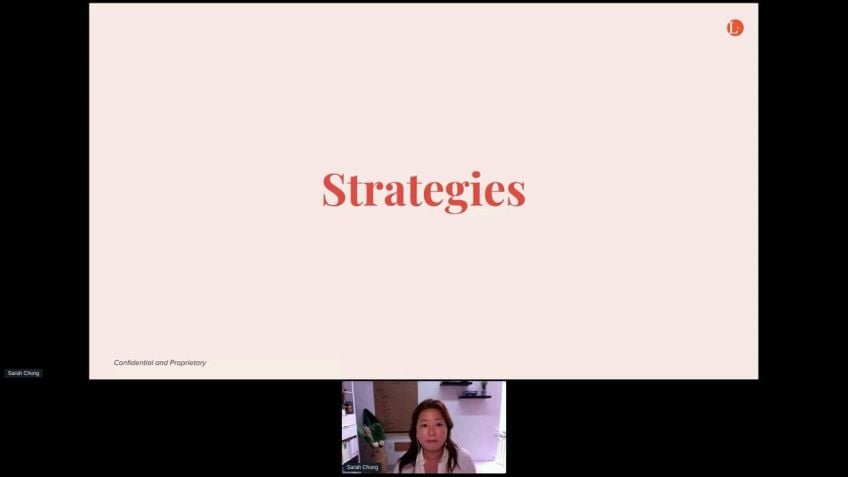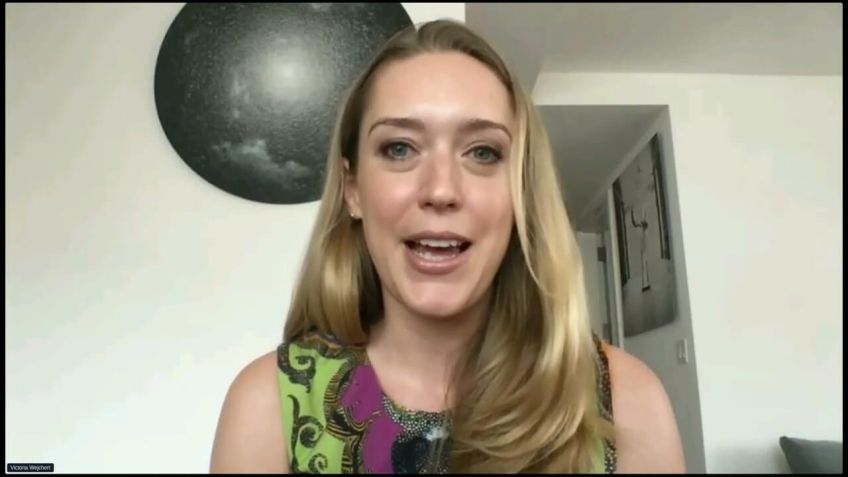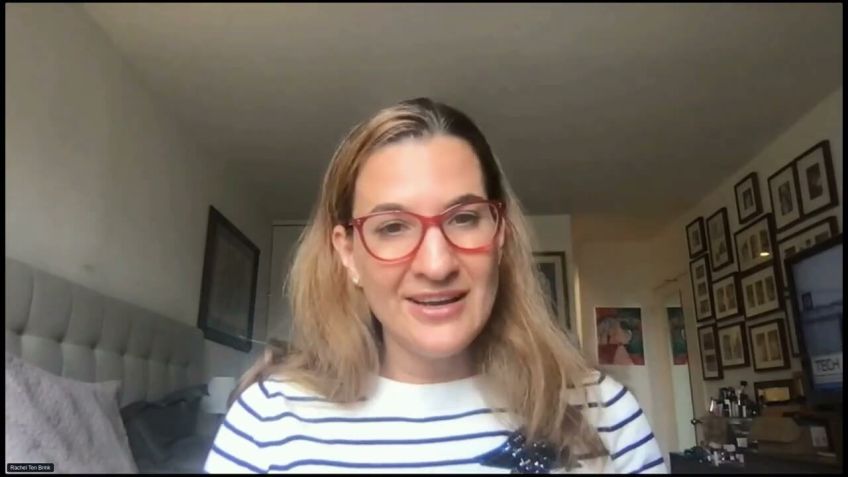How to start a fast growing company?
Building A Fast-Growing Company: A Step-by-Step Guide
Hello everyone out there building their dream businesses. In this article, we will walk you through the necessary steps to establish a rapidly growing company. Our aim is to provide you with insights and strategies to help you achieve a strong start and keep the momentum going.
Meet Your Guide
I'm Shruti, founder of Array Ventures, an investment firm specializing in supporting companies operating in the AI, data machine learning sector. Combining my engineering background and extensive experience as an investor and founder, I have distilled my observations into a playbook to guide you in building your fast-growing business.
The Starting Line
It begins with an idea – your resolution to a problem you believe hasn't been solved right. You have probably been thinking about venturing out on your own, and here's my advice — before you take the leap, make sure to do two things:
1. Articulate what you want to solve
Design a mock-up of the problem you're aiming to tackle or write a one-pager about it. Once you have a clear idea sketched out, gather as much customer feedback as you can. Prepare a questionnaire and conduct informal customer interviews to understand the level of interest in your solution and the urgency of their need.
2. Nail down a price point
Pricing is pivotal, and it’s crucial to get an idea of what customers are willing to pay for your product early on. This initial market research may seem difficult at first, but remember, your future company's success is on the line.
Remember, these conversations should extend beyond your immediate circle. Approach potential customers outside your comfort zone to get diverse and unbiased feedback.
Setting Milestones
Once you have your initial idea and potential pricing sorted, let’s look at the roadmap. Align your venture with a timeline. On average, it takes 9-12 years for a company to go public. Study the journeys of successful companies you admire and understand the critical milestones they achieved along their path.
Here are some points to ponder:
• What does your year 1, year 2, and year 5 look like in terms of product development and revenue generation?
• What are your sales targets for these years?
• How will you validate product-market fit?
• How can you tailor your go-to-market strategy to meet these milestones?
Having clear targets will keep you focused and drive efficient decision-making, even amid the chaos of early-stage startup operations.
Know Thy Market
In addition to setting your milestones, understanding your market is equally crucial. You must gather data and insights about your potential customers, especially if you are planning to launch a B2B product. Target at least 40 to 60 industry-specific professionals who match your buyer’s profile and understand the problem you are trying to solve, their willingness to pay for a solution, and the approximate amount they are willing to pay.
All these foresighted measures might feel overwhelming while still in your current job, but trust me, they will profoundly impact how steep your growth trajectory will be as a fast-growing company. Most of the hurdles you'll face are conquerable, and I’m confident that with the right mindset and a systematic approach, you will have a strong head start to your entrepreneurial journey. Any questions or thoughts about this topic? Feel free to reach out to me. I'm always ready to exchange thoughts to better understand and serve the startup ecosystem.
In Conclusion
Building a fast-growing company is no mean feat – it takes careful planning, market understanding, and risk-taking. However, with a clear idea, customer validation, a well-articulated roadmap, and a deep understanding of your market, you can set your venture on a fast-growth trajectory, ready to scale new heights. Thanks for reading, and I wish you all the best on your business journey.
Video Transcription
Hi, everyone. Um I am going to get started on how to build a fast growing company. Um ok, great. I was wondering if anyone can see me or hear me. Um um feel free to ask questions in the in the chat. Um I will be monitoring that.Um And uh let me know if you have a hard time hearing me. So I, I think I'm gonna give a little bit of uh uh intro to just myself first. Um I'm Shruti. I uh thank you, Mona. I like the validation that you guys can hear me because I'm not sure how many people are in the session or anything like that. Um So I'm uh Shruti. I run Array Ventures. Um Array is a first Czech enterprise investor. Um I, what I mean by that is you as you're forming your companies exactly. At that stage, we love to invest, we like to lead deals, we write about a million dollars uh and on average in and their own sizes are generally anywhere from a million to 2 million. Um And are the kind of companies we invest in, are A I data machine learning kind of companies, um you know, every everything from infrastructure to front end. So security um API tools, things like that. Um My background is an engineer by training.
So I started um in, in the, you know, weeds of uh being a coder for a decade. Uh I worked on all sorts of fun things, location based services, voice over IP uh data driven tools. And then I switched to becoming a founder. Um I also started a company in the social big data space. And then from there on, I got into venture about 10 years ago as well. So that's, I've worked at corporate venture arms like Samsung and I worked at True Ventures, um which is another early stage venture fund journalist, venture fund. And then about five years ago I started Array. So I've seen it all um on if you will, on the founder side, on the investor side. And then most recently I've taken on a board role for a very large pension fund, San Francisco's pension fund calls first. It's about $30 billion. So I think you can truly say now I've been on all sorts of the equation and uh having spent a lot of time with over 100 plus founders and companies and boards. Um on the first check stage on how to build companies, I've, uh kind of kind of come up with a playbook of what it takes to really get going in a, in a very, uh methodical way.
And oftentimes founders come to me and say, hey, you know, um I'm looking to start this idea and, uh, you know, it's, it's something I've worked on in the past but, uh I don't think, uh you know, anyone's doing it the right way. So I'm excited to go solve for this. And usually I tell most people to do um, two things, these two things are super important before you go into even leaving or thinking about leaving your jobs because we believe it's that, that pre work that often makes a company successful, at least to get to the next stage.
So obviously, once you're thinking about a good idea, the the more natural order of things people think about is like, how do you go find a co-founder or, or, you know, a team that you like working with and things as such? So that's great. I think finding a co-founder is a, is a great idea. Um I would say in that I'm not gonna add any valuable comments here other than please find someone you can build with and not just, you know, there are many doers out there, non doers out there and people kind of just want to manage. Uh but very few people who can actually build. And I, I think it's, it's easier to stay on top and uh innovate if you have a team that can build your product in house versus working with other firms early days. It's just, it's just a lot of time sync and money sync to work with um uh you know, design firms that can build your product, which I don't think so as at array, we don't invest in those kinds of companies we like building in what we call tech teams that can build their own products.
So that's the first thing. But having done all that, I think even before you get to this point, I think we talk, the two things I talked about were um have a crisp idea of what you want to solve. Even if it's just a mockup uh stage, build, it, build like a mock up of like your experience or problem you're solving or one pager and then go talk to as many customers as you can. So that's the first step, right? Like go talk to as many customers as you can that you think will want to buy your product. Um Oftentimes I tell my founders to come up with like a, a questionnaire that they would want to walk the companies through and, and, and their relationships through and say, hey, I want to solve this problem. Um You know, can I ask you some questions? Would you be interested in this product and obviously without making it too formal but just customer interviews. Um Would you want this, uh would you want this now? Is it a burning pain point? Is it a, you know what people industry usually say like a vitamin or an Advil.
Um I think if you do the questions correctly, you get a good sense of like the the amount of buyers uh that you might have, that might show interest in your product even before you take off or leave your current jobs to go start this company. Because oftentimes what looks good to you may not be good in the market which brings me to the follow on sub point to this. Do not just do customer interviews with your friends, right? Your friends will have a similar mindset and bubble kind of thinking as you will as you're building a company, go start asking, you know, people outside of your comfort zone, people that are friends of a friend and beyond that on Twitter or wherever else that are not in your circle of influence to see if they would want to buy a product.
Because so these people are not going to be polite to you. They're not gonna just agree to buying your product just because they're your friends, right? So I would do that. That's the first step. The second step I would do really important step that I think often most people forget um to execute on is pinning down a price point. I know this is really hard and often times early days it's really hard to ask your friends or, or potential customers you're interviewing, hey, is this a pain point? And then would you want to buy this product? Um, for how much if you can get to that? I think you have not done your job. I don't think you should leave your, your cushy jobs wherever you're, you're at to go start a company. I know this is very harsh, but this is the first step to actually building a fast growing company. Because oftentimes if you're doing that, if you have done that step in advance to you starting the company, your pipeline looks better. The number of people that are interested in your product looks better, your IC P, it looks better and the customer profile, right? Like it looks better.
Um Your um idea or market size is something you have a more grasp on. So like for example, once you start talking to 40 to 60 plus customers, and I recommend that many at least. Um and I'm talking about B to B companies here, I would say like the numbers are much, much higher if you're looking to start a consumer company. So on the B to B side, if you're looking to start something, talk to at least 40 to 60 customers, talk to the profile of the buyer. So if your buyer is going to be head of hr go talk to 4640 to 60 hr people, not, not anyone else, right? Like um ask them if this pinpoint resonates, ask them if they're willing to pay, I don't know like 100 K, 250 K a million, whatever uh over how much, I mean, that number is meant to, it's gonna be uncomfortable for everyone to kind of come to an agreement on. But that number kind of gives you a good perspective on uh what the customers will want to pay. And that brings me back to my market size. Comment on if you can do the math of, let's say a universe of 100 customers that will buy your product.
You have a good sense of how many of them will buy your product. The year one year, two, year three and generally your your t over the next 10 plus years. Um I think that's a basic set of homework one needs to do without which I think you can falter because money, I would say uh fundraising also becomes easier if you have this kind of an approach. Um When you go talk to an investor and say you've done your homework, you've talked to 40 customers. There's no way to argue that there's no way to say like, oh, I don't think customers, you know, I, I don't, you know, are, are incorrect basically. So the other day, I tweeted about this, I said, you know, I'm happy to be proven wrong. I have a strong point of view on things. But if you come and tell me customers want this and they will be willing to pay a particular price for this, that makes me feel like a comfortable price point. Uh You know, I'm in, I've changed my minds many times, changed my mind many times on what I am interested in and how I see the market just because the founders have done their job and they are teaching me how to actually go um and uh solve this problem and pinpoint in the market.
So I think with that, um I would say those are the two basic things you should do before you leave your current job. And um I can continue to the next stage, but I wanna pause and see if there are any questions from the audience here. I am not sure how this Q and A stuff will be. Are you guys just gonna type anything here? Yeah. Well, I can continue to the next stage. Um Awesome. Thanks guys. I love the, I love that you guys are chatting here so I can see that you're still here. There, there is no nothing uh in the Q and A tab actually so far. So um great. So OK, I think the next thing I would say is um once you get a, a good perspective on your and a grasp on your, on your customers, I think the big other step in the intercept time, I'll just kind of work backwards, the big other step. Um uh Yeah. OK. I'm, I'm doing that. I just don't see any questions. Thank you. Um The big other step, I would say that is um that oftentimes, you know, and by the way I speak all this from experience, I have been a founder before and I have made the same mistakes that most of us are making today um and learned the hard way.
So when I tell these kinds of uh stories of what you should and should not be doing, it's purely out of experience from my own journey. and what I wish someone told me instead of me learning the hard way and, and, and using my own precious um time and career to figure that out because not everything needs to be something you live through. So the second thing I would focus on is uh working backwards. So I think when you get into this founder journey, it's really, really hard to um see the big picture once you're in it. I think it's easier as you're figuring it out. Um Right before you get into it, what do I mean by that? I think there is as you're starting your companies, there is like a benchmark out there in the industry, which is how long does on an average it takes for a company to go public on an average. Those numbers are anywhere from 9 to 12 years now. For example, Uber went public last few years and, and they started in 2007. So it's in a similar time frame of number of years that can be true. I mean, there's obviously Ed K stories like Square went public in five years.
There is other companies that took a little bit longer. It depends on how they got started. But we're talking about fast growing companies here, fast growing companies. It is very important to understand what you need to do. Exactly. Year, 10 year, nine year, eight, year, five, year one.
But when you're in this oftentimes it is hard and I'm not disagreeing with that, but it's, that's why I'm saying do this work beforehand because once you're in it, you're just lost into the web of little details of things you have to, you know, do every, every on a daily basis, like I don't know, issue stock option and go look for good hires and find good customers.
You are just in a hamster, we trying to find and make the thing afloat and keep the thing afloat and fundraise and all the good stuff. But oftentimes if you don't have targets in mind, it's really hard to figure out what you're gonna go for. And so when I say, figure out what you need to do, year one, year, two, year five, try to understand your own benchmarks. So when you start the company, you do know when should I hit a million, er, r now? People just kind of, you know, every time I ask a founder, what's your milestone for this year? They just say without thinking they just say like a millionaire. R it's not so easy. It's really not that easy to just get to a Millionaire RR first year. So when most people say that without thinking, I kind of just count their answers because that's not, that's not possible. Unless you've really built out a good product. You've done your go to market homework or you've done all this pre set up that you should be doing before you start the company. And so having said that I would say, um you need to understand your milestone for year one, year two and it's gonna be a little bit slower originally.
So there's always AJ especially in enterprise, there's AJ curve, you have to kind of spend some time, especially for a deep tech product. Um You have to spend some time building the product. Uh depending on the company, it can take a year more than a year. But if you're a simple fast solution where you're just hacking up things and if a product building takes a year, then you're already behind the curve on the path we're talking about today. And often times what I've seen, especially founders who just kind of are in it and then forget about the time that's passing by year three year four comes by and they're still in the product building mode. The product is still not mature enough to get to the next level enterprise stage kind of level and it's really difficult to get and break past that. And, you know, as, as um we know, like we would call it crossing the chasm. It's really hard to go get past the chasm um of, I'm just building, do I need to get to scale and product market fit? Um product market fit is the next big step and you cannot do that until you build a proper, you know, I, I don't wanna say MVP, but like a proper product that customers are excited to use year two, year three.
So I think having those kinds of things are really hard to understand when you know, when you're in it because everything is coming at you and you're drinking from a fire hose. But I would say that understanding that journey for you beforehand and knowing your milestones beforehand is very important. And so even before you quit your jobs today, you need to understand what path are you gonna take and what are some of your admirable kind of companies comp companies that, you know, like analog of, of companies in your space that did it a certain way. And who do you want to follow? Like do you like what Twilio did? They were scrappy from the beginning and this is a kind of milestone they took, they focused more on developer engagement over revenue. Like what are you going to do and what is your playbook gonna be? And I'm sure there is some company that has gone public that you can kind of study a little bit before you even start your company on like what kind of journey you want to take to get to that stage.
So I think that now how do you find that study the the essence of the companies that you like? Or there is a beemer cloud index? Beemer has done a good analysis of every SAS company, for example, that's out there, that is good on working backwards on what their revenue was each year as, as much as data they could get. Um That's really valuable to understand because if you want to go public your 10 and you want to grow a certain pace, I think people forget that, you know, through year three or year four, like you're talking a 10 year time span, how can year three and year four still be less than a millionaire are right.
So I think that's important as well and I would really spend a lot of time thinking about those milestones. You'll take even year one year two year three, year four. And I'm not talking about building a model or anything like that because that takes too much time. I'm talking like intuition of we need to get to these, let's just say like a millionaire or milestone. Like, do we know if that's achievable in, in year one or year two? And is our product there? Do we have to go to market um kind of playbook required at this stage to get to this point. So I'll pause again and see if anyone, if anyone has any questions. No questions. Um All right. Well, I, well, how long is this session supposed to go? Um Adriana. OK, great. Well, um uh first of all, thank you, Nicole. Um I, I'm not sure if I'm gonna say your name, right? But is it Aji? Um I am reading a question. Awesome. The best approach to doing a market analysis. Um I don't think there are any templates honestly. Uh That's a good prompt for me to write something up about how to do the customer research, but I would go with your gut. I think the goal is to get to a number. So what are the kinds of questions you would ask to see if the customer can give you a number?
Now, if you're not clear enough because oftentimes you're talking to your friend and you say, hey, you know what um I'm looking to build a um uh you know, uh product. And so, and so category would you buy it? And they're gonna obviously say yes, they're not gonna say no. I think that's the catch um we fall into because our friends are afraid to say no and we did not hear um you know, we did not hear any. Um Are we at a time here? Um Sorry, I'm not sure if anyone's still here, but I can just finish my answer. I would say just get to uh and, and feel free to reach out to me offline. I'm at um Shruti at a ra dot VC. Uh But I would just kind of get to an answer of how much they want to pay before you get to a point of um creating a template and questions that can build up to that kind of a number that they want to give you an answer for. I hope this helps. I think we're up on our time and uh let me know if you all have any questions offline. Find me on Twitter. I'm at Shruti.





